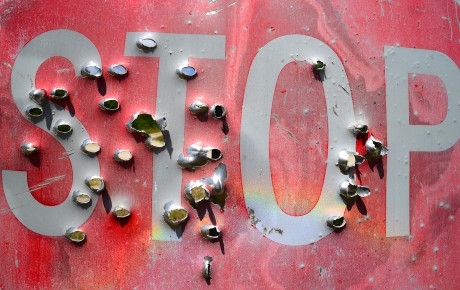
A long and twisted story
Wine lovers should toast a raffish English priest’s ingenuity – or effrontery. Bobby Read explains why.
I am, dear reader, feeling depressed. In fact, I’m feeling, as an American friend put it, “lower than a snake’s butt”. I’ve just had to pay my children’s school fees, which, along with replacing two defunct cars and the strong Euro, has meant my wine budget has evaporated faster than water in a desert. I haven’t been able to afford to buy any of the delicious 2015 vintages, and now I’m trying to convince myself that the best strategy is to wait and hope prices will come down.
The invention of the cork stopper revolutionised winemaking, because it allowed wine to be kept. But it then created the conundrum of how to get the cork out of the bottle.
So my mind has wandered to the issue of corkscrews. Well, why wouldn’t it? They were the first wine gadget, and as a bit of a wine nerd I’ve been mildly fascinated by them for ages. The invention of the cork stopper revolutionised winemaking, because it allowed wine to be kept. But it then created the conundrum of how to get the cork out of the bottle. Although “worms”, based on an instrument for cleaning muskets, had been used to help extract corks for years it was an English rector who in 1795 came up with the first patented design for a corkscrew.
The Reverend Samuel Henshall’s design was simple and yet devilishly clever: the addition of a small metal disc at the top of the screw caused the cork to turn, thereby breaking the seal between it and the neck of the bottle. I think he knew he was on to a winner with his corkscrew from the start, enlisting the famous entrepreneur Matthew Boulton, who had collaborated with James Watt on the first steam-engine design, to produce it. Henshall proudly declared to Boulton his invention could pull even the “hardest, tightest or most decayed Cork”.
White-collar criminal?
Henshall noted his design was so simple that “every Person who sees it will be surprised that he himself did not find out.” Perhaps the most surprised might have been Thomas Read, an Irishman from whom some corkscrew historians are convinced Henshall stole the design. (And before you all start shouting that it is a case of sour grapes, he isn’t a known relative of mine.)
Despite the faint whiff of sulphur that surrounds him, Henshall is regarded as something of a hero by corkscrew enthusiasts: a dedicated, some might even say fanatical, group.
For a man of the cloth, Henshall’s lifestyle was rackety. He was frequently in debt – he was taken to court three times for not paying his bills, once by a brewer – and couldn’t even afford his share of the patent expenses. Boulton’s lawyer drily observed in a letter: “I doubt I shall not easily extract £50 from the Parson, as he would a Cork from a Bottle.”
He died at the relatively tender age of 42, which makes me wonder if his invention didn’t help to hasten his demise. But despite the faint whiff of sulphur that surrounds him, Henshall is regarded as something of a hero by corkscrew enthusiasts: a dedicated, some might even say fanatical, group.
Henshall’s final resting place in Bow Church was uncovered by the author of Corkscrew Patents from 1795 – a tome I must admit I haven’t yet got round to reading. A group called the International Correspondence of Corkscrew Addicts (ICCA) paid for a commemorative plaque honouring his achievement to be put up in the church, and the dedication ceremony was given a lavish write-up in The Weekly Screw (the Virtual Corkscrew Museum’s gloriously-titled newspaper) at which the current parish priest suggested the inventor of the screw cap should perhaps be consigned to Hell.
The ICCA is to helixophiles (corkscrew collectors to you and me) what the Cambridge Apostles were to the British ruling class in the 1930s. It’s the world’s most prestigious society of corkscrew collectors, led by an annually-elected Right – as, in the words of Henry Clay, the American statesman, it’s better to be right than President. Its membership is strictly limited to 50 (so few I hear you say) and its entry requirements are rigorous: aspiring members must provide an application including the size and nature of their collection, how their “addiction was developed”, as well as a “photograph and detailed description of what [the] applicant regards as his/her six best corkscrews”.
A very British obsession
The next leap forwards in the corkscrew came less than a decade after Henshall’s. It was made by another Englishman, Edward Thompson, who in 1802 patented a way of extracting a cork by continuously twisting in the same direction. It has been hailed by some connoisseurs as the “best corkscrew ever designed”.
But for me the best is the Waiter’s Friend, the pocket corkscrew with a lever that helps you to ease the cork out of the bottle. Invented by a German in the late 19thcentury it is a perfect example of the best kind of Teutonic design, a fusion of form and function, which I think remains the most effective means of taking out a cork – and all for less than a fiver.
The sound of a popping cork even makes the wine taste better, according to a recent (small) study of wine buffs carried out by an Oxford University professor.
But corkscrews can sell for serious amounts. One made using metal from the old London Bridge sold for £40,000 not so long ago, while one made by Rob Higgs, another Englishman – what is about the corkscrew that obsesses we English? – is even pricier. It’s an elaborate, wacky creation containing 300 moving parts that owes much to Heath Robinson, and would certainly be a conversation piece at a dinner party, if you could afford the £75,000 price tag. See for yourselves.
[ https://youtu.be/oZn2fqIcBhs]
Of course, corks aren’t the best way of preserving wines in the 21st century, but where’s the romance in pulling out a tube of plastic? The sound of a popping cork even makes the wine taste better, tantalising our tastebuds and producing a heady whiff of anticipation even before the glass reaches our lips, according to a recent (small) study of wine buffs carried out by an Oxford University professor.
Corkscrews now range from the plain to the plainly absurd, but the next time you open a bottle make sure you raise a glass to the man every oenophile should thank: the Reverend Henshall.



